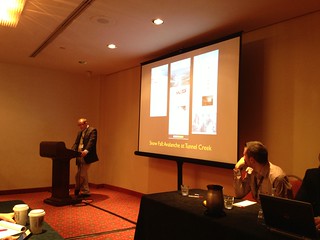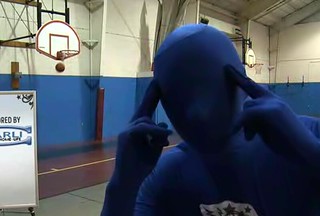By Matt Pepin, Boston.com
Go to this web page.
Meet Orlando Dunkman:
Type in Jedi Mind Trick (or eff-off, or even Dwight Howard).
Watch. Laugh.
And learn, because that’s one of countless ways journalists are using multimedia to enhance their storytelling these days. Tim Stephens, who led a workshop on multimedia storytelling at the Associated Press Sports Editors 2013 Summer Conference in Detroit, explains a little more:
While multimedia combines information and entertainment with the ability to engage readers and explain things to them in new and exciting ways, it also has a benefit the bosses will love.
“Multimedia can be a tremendous opportunity for revenue,” Stephens said. “The expectation of the advertiser is ‘what are you doing special with this [event]’.”
 |
Todd Stewart, the interactive design manager at the Orlando Sentinel and one of the brains behind Orlando Dunkman, can confirm. The Dunkman feature was developed as part of the Sentinel’s coverage of the NBA All-Star Game in Orlando in 2012, and it was fully sponsored, explained Stewart, one of two panelists for Stephens’ workshop.
While Orlando focuses on the humor angle in many of its multimedia features, which include parody song videos and the Orlando Magic beard builder, multimedia storytelling can also bring a story to life.
Few stories show the power of multimedia storytelling better than the New York Times’ “Snow Fall” feature, which was created from a desire to remove the clutter of related links and supplementary material from centralized locations in a feature and provide a more seamless flow.
“The intent was to totally immerse the reader in the experience. No longer was the reader required to take detours,” explained Jim Luttrell of the New York Times, the session’s other panelist. “All the visuals are placed where they make sense, and we hope a seamless experience for the reader.”
 |
Luttrell demonstrated a number of additional ways the New York Times uses multimedia to tell stories, including:
One race, every medalist ever: An interactive that shows all the medalists in the 100 meters at the Olympics and how the race, and sprinters, have evolved. A fascinating look at one of the marquee events.
Bob Beamon’s long Olympic shadow: Similar to the 100 meters graphic, this puts plenty of new perspective on the event, including a look at winning jumps and a comparison of long jumping distances to things easy to relate to, such as a basketball court.
Leap three stories, impress judges: A look at the sport of diving that includes motion-capture graphics to explain exactly how a diver does his thing and what the judges are scrutinizing.
Stephens wrapped up the workshop with a look at what CBS, where he is deputy managing editor for interactive, has been doing with the second-screen experience, most notably during the Super Bowl.
This included alternate camera angles, enhanced stats, social interaction, game replays and replays of the commercials.
“The numbers are on the side of people using a device while watching games,” Stephen said.







